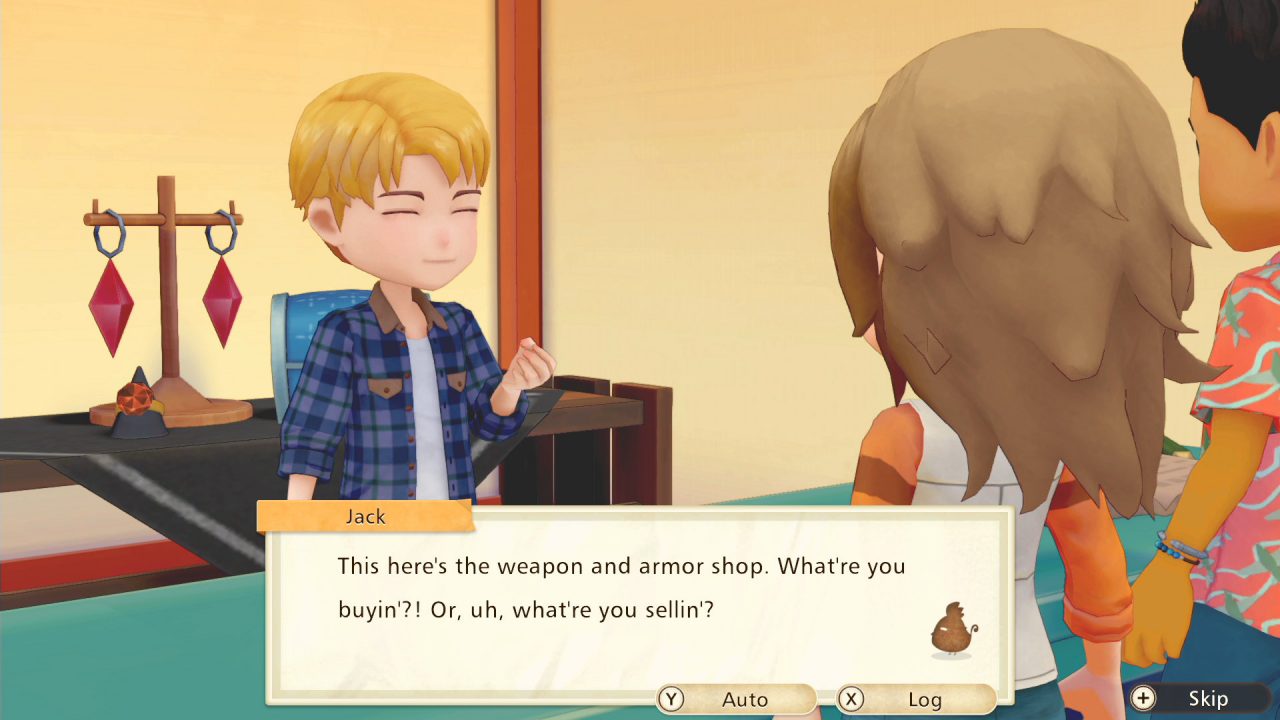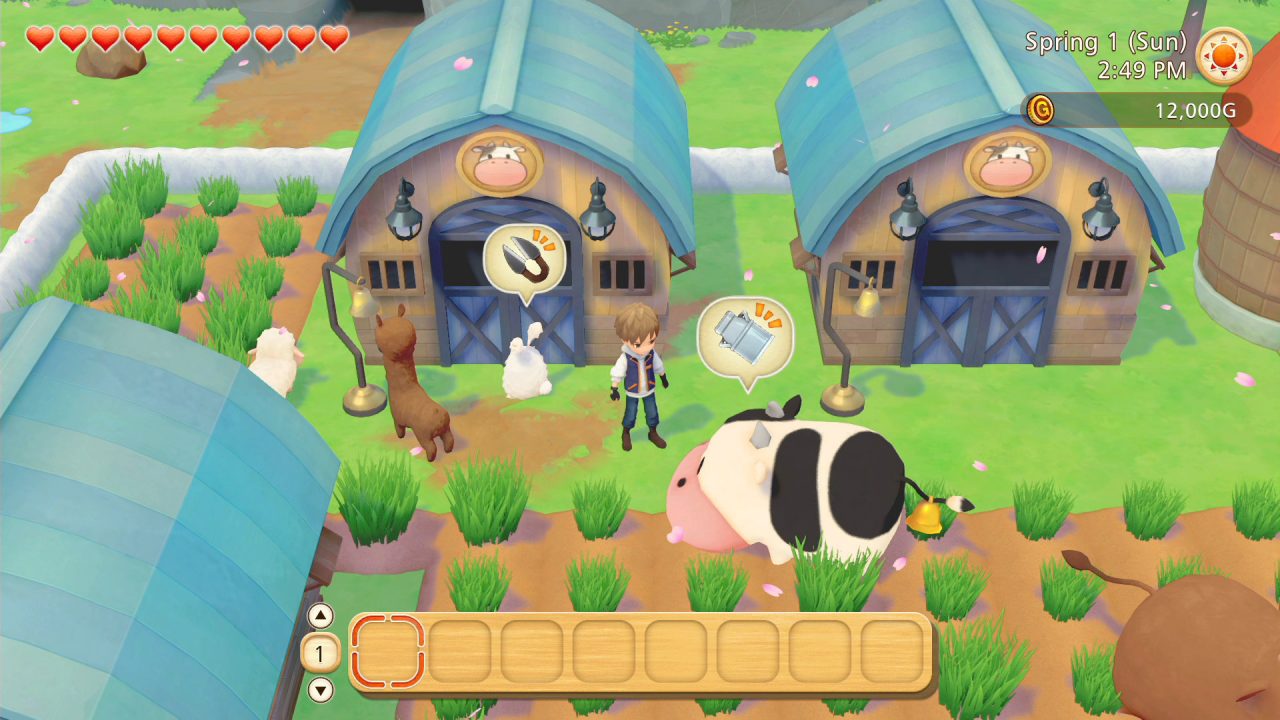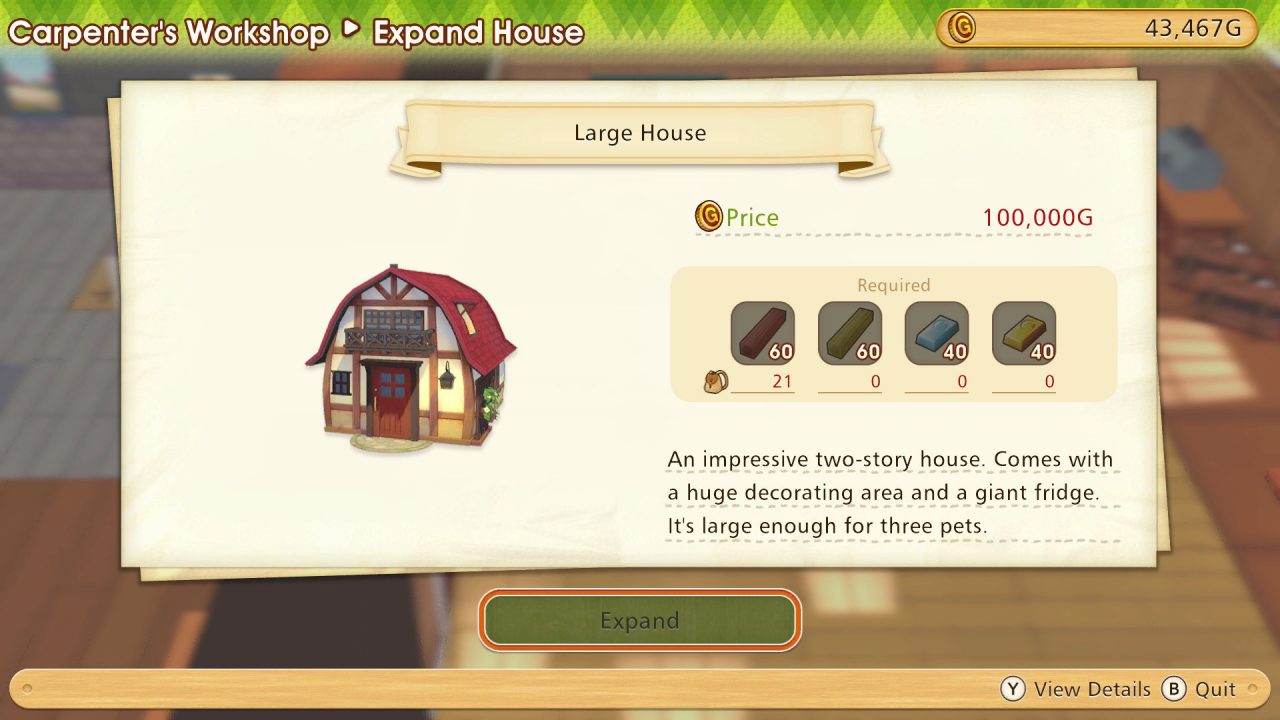The prolific Story of Seasons series celebrates its 25th anniversary this year, likely due to the questions it always has players asking. With each new game comes the question, “How do I want to approach my new farm life?” And each new game offers its own collection of tools to help you reach that answer. The newest entry in the series, Story of Seasons: Pioneers of Olive Town, seeks to bestow upon players the most options, and as a result, the most freedom to answer that question—but it in turn leaves them asking even more questions, some for better and some for worse.
The first questions are always good ones. In Pioneers of Olive Town, your farm is actually a massive stretch of land overrun by trees and weeds. The series’ beloved gameplay returns, having you till the land, plant and grow crops, and care for livestock. By selling crops and byproducts, you fatten up your wallet to buy more crops, livestock, or even materials for clearing out the overgrown forest or expanding your farm facilities. How to utilize your resources is a question you need to answer right away, because Pioneers of Olive Town is the fastest Story of Seasons to date in terms of progression. All major stores are open from the get-go, with only the tailor and salon needing to be unlocked—and you can unlock them very quickly.
The tailor and salon owners are not among the marriage candidates, meaning you can start getting to know them right away, too. With ten local singles whom you can freely pursue regardless of your chosen gender, it can’t be understated just how wonderfully Story of Seasons has grown in this respect. Who you want to spend the rest of your Olive Town life with is entirely up to you, and although your mileage may vary (as with any set of marriage candidates), the fact that they are all available from the start means you can approach them at your own pace without worry that someone else may show up later to sweep you off your feet after already settling down.

In fact, the only thing determining how quickly or slowly you progress overall is you, though your choices are big ones from the start. Do you pay off bridge repairs to make it to the next part of your farm, or do you stockpile the necessary materials to fix it up yourself? Do you want to spend your ingots on seed makers to keep your crops increasing in star value, or would you rather upgrade your tools to make tilling, chopping, watering, and cutting down weeds easier?
Well, that last one isn’t entirely a question. No matter how slowly you want to take things, the farmland doesn’t really let you. Trees and weeds grow back with breakneck speed, and even if you have some land tilled already, the excessive foliage quickly obstructs your view and greatly inconveniences your movement. Leaving the trees and shrubbery alone causes more problems than the time taken to chop them down, but there are still only so many hours in an in-game day. Combine that with the overwhelming size of your farm—which is larger than the neighboring town—and you have a recipe for farm maintenance as a top priority no matter what your particular focus is.
This forces you to problem-solve. How can you maintain your farm so that you’re not spending all your day just chopping down the returning trees and weeds? Well, you may want to try fencing in some areas to keep things organized. I thought it would be cute to set up a fence around my barns and coops to keep my animals in when called out to graze. But this led to a few problems, starting with the gates. There tends to be hitbox detection difficulties in Pioneers of Olive Town, which is expected when your character can run freely but the majority of interactable objects are glued to a grid. Throughout my adventures, I found myself directly facing various objects, including trees to chop or rocks to smash, and still my character whiffed their swing completely despite the animation looking perfectly aligned. This was especially noticeable with the gates, however, and I couldn’t help but wonder why I should bother putting down gates if they’re such a hassle to open even when I’m right in front of them.
Then there were the animals themselves. As I entered and exited my home, or left the farm and returned, I would find my animals had unexpectedly warped outside of their fence. What’s the point of fences if they can’t keep things inside of them? Although a day-one patch may have alleviated this issue, I don’t want to spend most of my day rebuilding the fence I already took down to find out. I have crops and livestock to tend to!

Now you’re faced with another question: what’s the point of a “fully customizable farmland” if reorganizing it is so punishing? Because there’s no way to pause time like in Trio of Towns’s farm customization mode. You inevitably have to sacrifice many daily activities if you want to move things around on the farm. It’s especially bad when moving your barns and coops because lifting them up to move them releases all the animals inside. The farmland’s massive size once again proves to be a detriment rather than a boon, because it’s incredibly time-consuming moving the objects and moving about the farm itself to place them. When I wanted to move my barns to the far side of my land, I had to pick it up, go all the way to where I wanted to move it, then run all the way back to herd up my animals. Spontaneous farm rearrangement isn’t really an option when doing so takes up most of your day.
The other issue with the size of the farmland is that most of the space can’t be used as freely as it should be. The first place you really notice this is around the edges of the farm. When I tried my hand with fences, it was hard to make simple rectangular enclosures because the very edges of the map are off-limits to place items. You can put roads down instead, but the edges where you can’t place anything can in fact grow more trees and weeds—a massive annoyance again because they block your view and obstruct your movement. At first I thought it was perhaps a safety net of sorts, so you never accidentally prevent trees from growing at all, as they’re a valuable resource. But later you unlock a special area specifically for cutting down all sorts of trees, so having trees clog up your farmland’s edges is hardly necessary.
You’ll also find the majority of your farm space forcefully taken up by makers. Makers are small structures you craft and place on your farm wherever you choose, and it takes the raw material you put in and converts it into a more refined, usable material. These materials are crucial in your progression through the game. For example, you need to convert the ores you find into ingots to make more makers, upgrade your tools, build new buildings, and much, much more. You can purchase these materials directly from the stores, but they’re very pricey. If you’re making enough money selling products that you can afford to buy materials directly, it’s because you’re using makers to turn those products into more valuable equivalents. At that point, it’s not necessary to buy the materials because you’re making them yourself—which is great. The progression from a struggling new farmer to an entirely self-sufficient one is a favorite aspect of the Story of Seasons series.

The problem is, you can only make one thing at a time with the makers. As the requirements for house upgrades and tool upgrades increase, you naturally need to make more makers, and at two squares by two squares a pop, your farmland quickly becomes swamped by them. Even if you place them all close together, having to grab each item from each maker one by one takes in-game time that quickly adds up due to the number of makers across all the different types you have to put down. For instance, you need thread makers to convert grass to thread, then fabric makers to convert the thread into fabric, or yarn makers to make yarn from wool, and then a textile maker to turn that wool into a textile. The farmland should be bigger so you can fill it with a wide assortment of things, not just so it can accommodate the massive number of makers you need. I’d actually prefer a smaller farm but with makers that can make more than one item at a time, requiring fewer of them and therefore less space, which is far more convenient. Later in the game you unlock “giant” makers that very helpfully convert two units of material into three outputs, but you still need to put a lot of them down to produce what you need. They also take up a three-by-three space instead of a two-by-two space like their basic counterparts, so you still find your farm overrun by makers in the middle and trees and weeds and rocks at the edges.
What space isn’t filled by makers will likely be taken by storage containers. At first I thought I’d enjoy the storage system of Pioneers of Olive Town, in which each box has its own stuff, none of them connected to the other. This is pretty helpful with organization—I can put my ores next to my ingot makers and my food next to the mine so I can be prepared when going in. But while some containers will give you ample storage, such as ores, ingots, logs, and lumber all fitting snuggly into one box, others won’t. I put all my flower-related makers close to each other, but I need multiple boxes to store the flowers, dyes, essences, and honeycombs that go into and come out of the makers—and this isn’t even counting the honey that gets processed from the honeycombs, which I choose to haul all the way back to my house to squeeze into my fridge.
Yet there’s still something compelling about going through the daily grind. Despite Pioneers of Olive Town’s blemishes, simply farming is as fun and rewarding as it’s always been. There’s no question as to why Story of Seasons has seen 25 years of success, and there’s no doubt that the series is making positive strides forward in allowing players the freedom such simulation games should offer. With the most robust customization system the series has seen to date, the freedom to marry whomever of the marriage candidates you like, and countless crops and animals to care for, Pioneers of Olive Town is a solid entry in the series. But I’m also left wondering why Pioneers of Olive Town excludes features from previous entries that could have alleviated some of its most glaring issues, such as Trio of Towns allowing you to pause time when reorganizing your farm and letting you move barns with the animals inside. For the series’ 25th anniversary, I can understand why you’d want to keep looking forward—but if Pioneers of Olive Town teaches us anything, it’s that there’s plenty to look back on that works, too, and not just regarding the basic farming formula.



